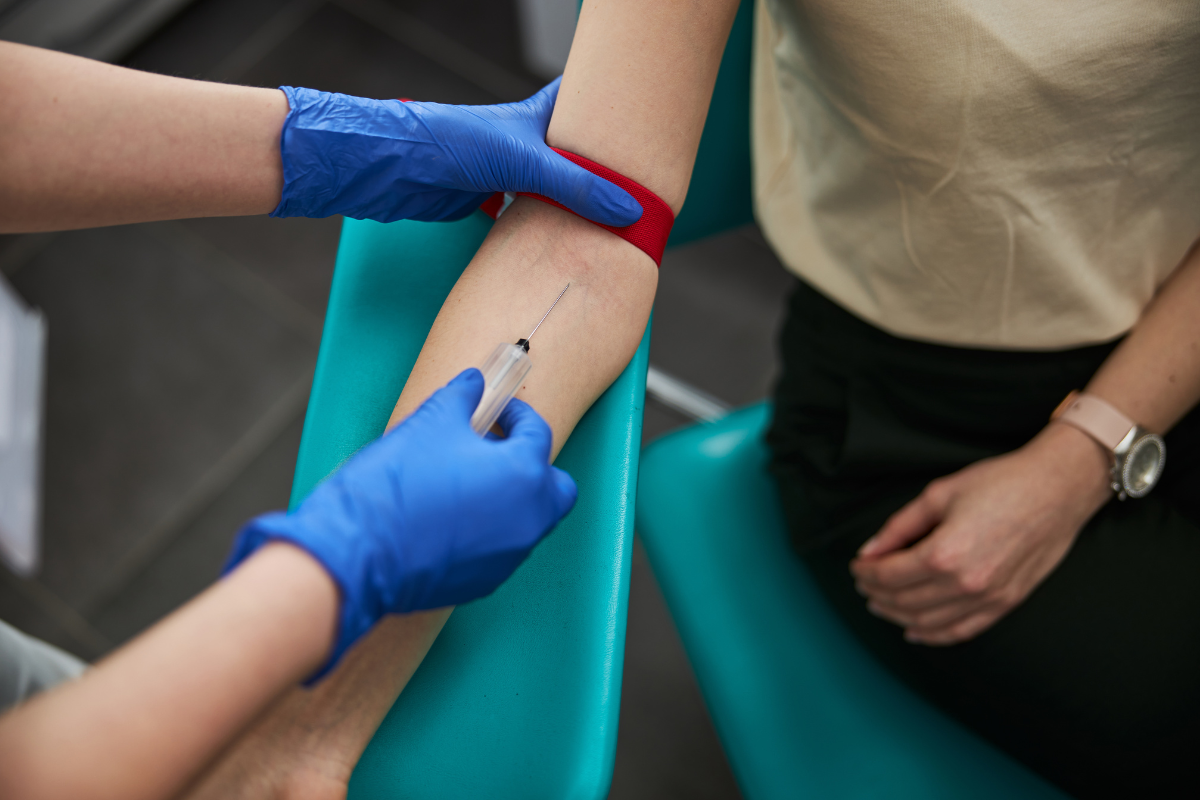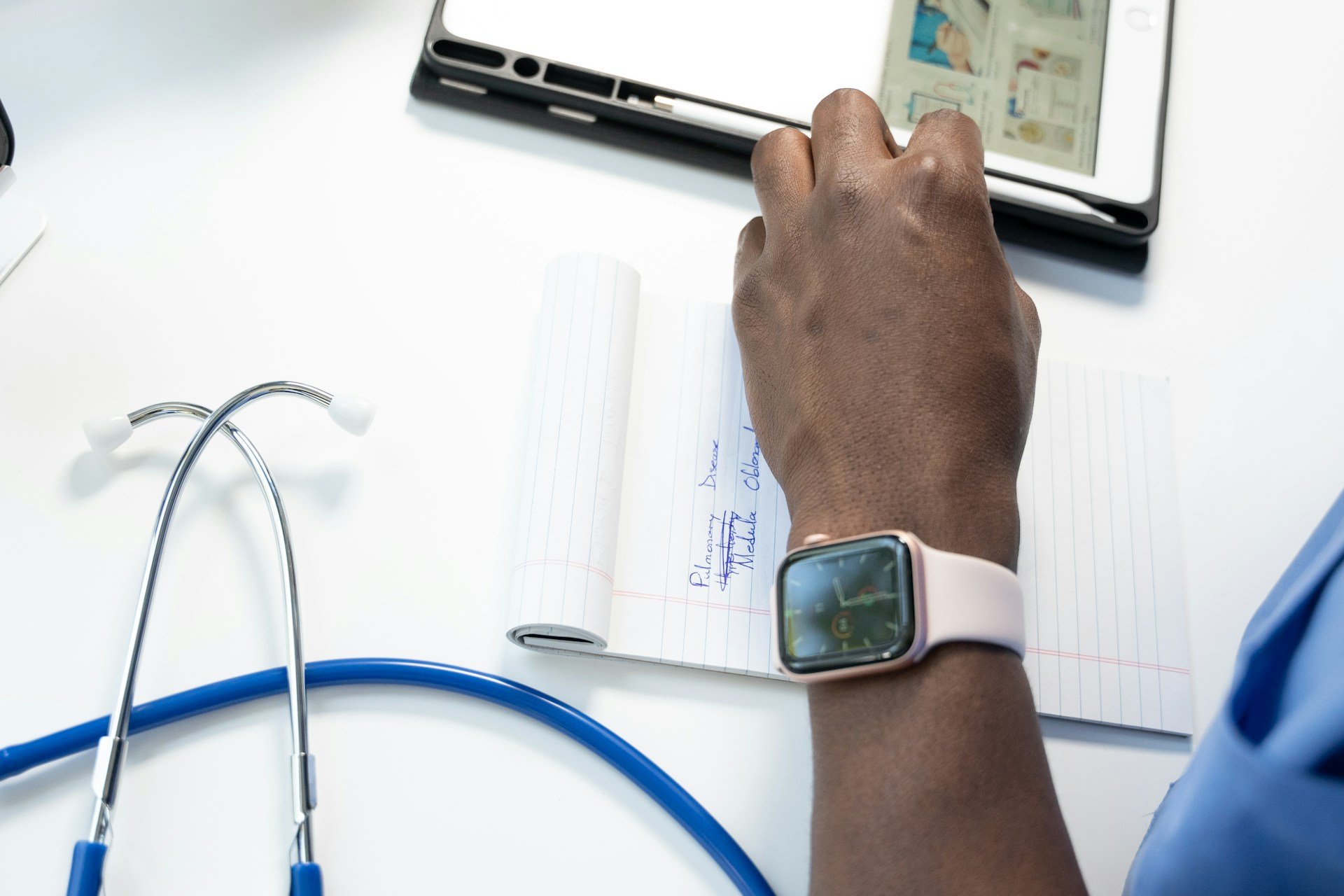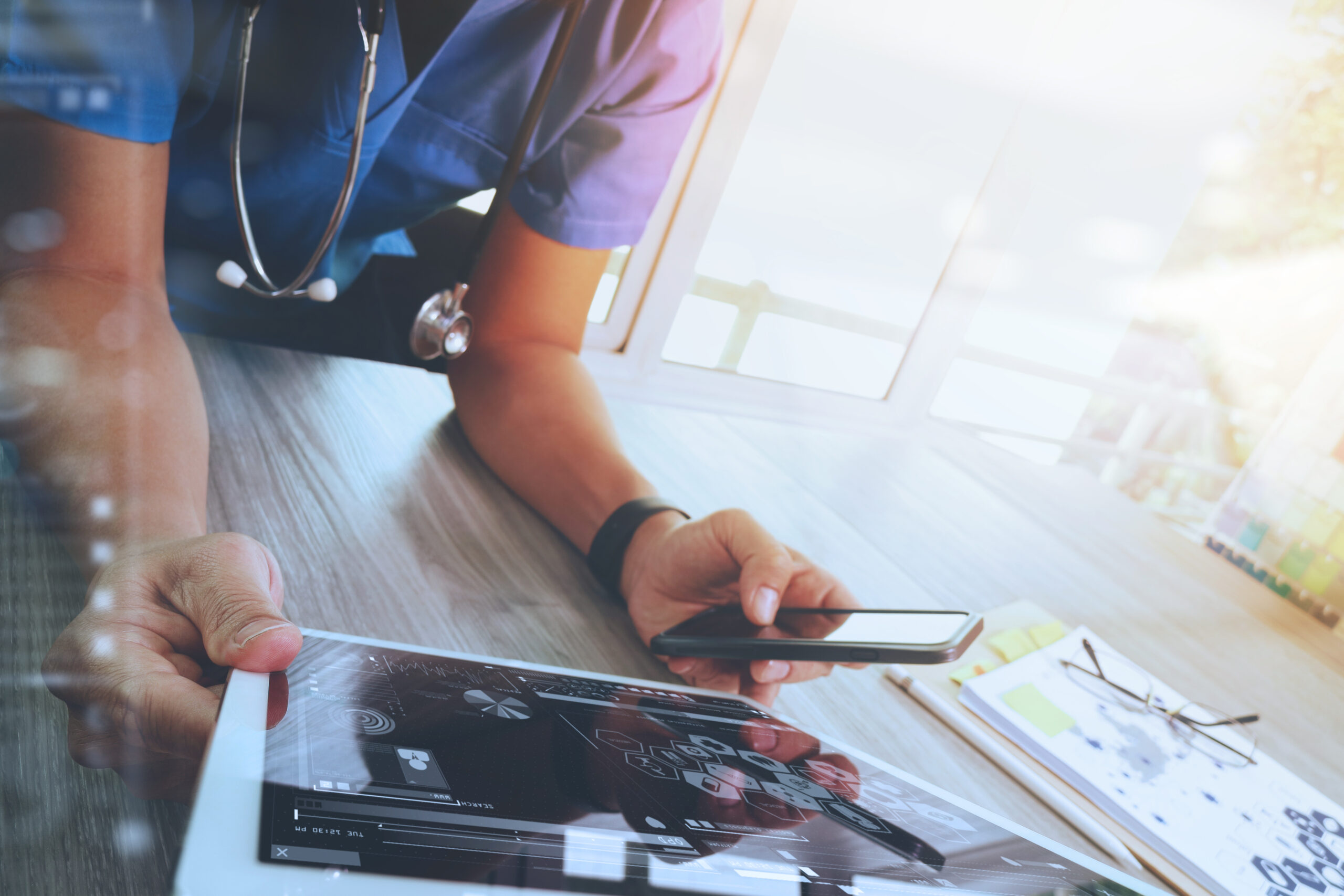Digital Biomarkers for Disease Detection and Monitoring

In October 2022, Oxford Global’s Biomarkers series was delighted to host a panel of industry experts for the Discussion Group, Digital Biomarkers for Disease Detection and Monitoring. The group came together for one hour of conversation and debate on improving early disease detection and patient monitoring with digital biomarkers.
Notable attendees included senior representatives from Janssen, Biogen, AstraZeneca, and Gedeon Richter, to name a few.
Meet the Panel

Beverley Patterson, Clinical Science Director at Ono Pharma UK Ltd*, moderated the discussion. She has extensive global drug development experience spanning low molecular weight molecules, biologics (antibodies, peptides and oligonucleotides), nonclinical, and DMPK. Other areas of expertise include translational science, clinical pharmacology, as well as late phase development and regulatory submissions. She received a biochemistry degree and PhD from Oxford and Cambridge Universities, respectively and is committed to mentoring the next generation of scientists. Therapeutic areas of expertise include neurology, immunology, and respiratory.
*The opinions expressed in this discussion are solely the author’s and do not reflect the opinions and beliefs of Ono Pharma UK Ltd.

Joining Patterson was George Kumar, Director and World Wide Medical Lead for Biomarkers, Diagnostics and Digital Pathology at Bristol Myers Squibb*. Kumar currently leads the global PD-L1 training program, and various artificial and augmented intelligence (AI) initiatives at BMS. His 2019 book “Predictive Biomarkers in Oncology- Applications in Precision Medicine (eds. Badve S and Kumar GL)” was published by Springer Nature in Switzerland. Kumar is passionate about using digital pathology and AI for PD-L1 education, training, quality control and assurance, and telepathology.
*The opinions expressed in this discussion are solely the author's and do not reflect the opinions and beliefs of Bristol Myers Squibb

Steven Piccoli, Associate Vice President at Sun Pharmaceutical Advanced Research Center,was the final leader to join the session. Formerly, he was Head of Clinical Biomarkers at GlaxoSmithKline and led clinical/analytical teams at Johnson & Johnson and Bristol-Myers Squibb. Piccoli Founded a CRO to conduct medical device trials and directed the CLIA-regulated patient testing laboratory. In addition, Piccoli has served on the FDA CDRH Medical Devices Panel in Immunology, Critical Path Institute, Predictive Safety Testing Consortium, Foundation of the National Institutes of Health, and the Biomarkers Consortium.
Digital Biomarkers – What are They?
Patterson opened the Discussion Group with a definition of a digital biomarker. “Digital biomarkers are objective, quantifiable, physiological, and behavioural measures that are collected by means of digital devices that are portable, wearable, implantable, or digestible,” she explained.
Often, they are used to explain, influence, or predict health-related outcomes. Example digital biomarkers include smartwatches that detects irregular pulse rate, accelerometery to measures sleep duration, and wearable digital technologies that track mood. Patterson highlighted how digital devices can provide individualised measures which can now be recorded to create personalised baselines for health status and disease prevention.
Are there Digital Biomarkers in Oncology?
Following Patterson’s introduction, Kumar took to the floor to discuss the topic of digital biomarkers in oncology. “If you talk to a computational scientist, a digital biomarker is also called a computational biomarker.” he began. “It is a biomarker that you can discover using artificial intelligence or a computational method without relying on immunohistochemistry or hematoxylin-Eosin slides,” Kumar explained.
- Patient Engagement in Biomarker Development
- Digital Biomarkers: Using Smartphones for the Passive Monitoring of Neurodegenerative Diseases
- Steven Piccoli: Towards Improved Biomarker Analysis and Validation
A typical example of a digital biomarker in oncology is AI-assisted skin cancer diagnostics. This works by identifying biomarkers on the digitised slides and can be used in decision-making by a physician. AI-assisted skin cancer diagnostics could be used in the future with minimal additional time and financial effort and can detect melanomas as small as 0.2mm — a measurement too small for the human eye.
“Digital biomarkers in oncology provide a continuous remote data stream taken from wearable sensors and mobile devices to guide treatment decisions,” Kumar continued. A significant benefit of these devices is that they can measure potential side effects. Wearable and mobile technologies can track the activity and mobility of cancer patients following intensive chemotherapy, chemoradiotherapy, radio-immunotherapy, or radiation therapy treatment.
Case Study: Indirect Digital Biomarker for Continuous Glucose Monitoring
Piccoli responded to Kumar’s point by stressing the need to go one step further in data extraction from digital biomarkers. “Now George alluded to AI interrogation of immunohistochemistry, but I’m saying that we can discover different biomarkers based on that continuous digital stream of information,” he said. “Constant, autonomous monitoring of physiological functions in neurological disease is the way forward.”
The Freestyle Continuous Glucose Monitoring technology provides a glucose management plan for diabetes patients in an easy, user-friendly way.
Kumar agreed, mentioning Abbott Laboratories’ Freestyle Continuous Glucose Monitoring device as a prime example. The Freestyle Continuous Glucose Monitoring technology provides a glucose management plan for diabetes patients in an easy, user-friendly way. It measures glucose levels through a small sensor applied to the back of the upper arm and provides real-time glucose readings for up to 10 days, both day and night.
Kumar and Piccoli jointly described the device as discreet and convenient, due to the sensor’s ability to read glucose levels through clothes. Members of the audience likewise attested to the freestyle bioamarkers’ ease of use compared to traditional glucose monitoring, such as drawing blood via a fingerstick.
What’s Next in the Discussion Group Series?
The session concluded with a final discussion on the future goals of digital biomarkers for disease detection and monitoring. Conversation also covered some of the key regulatory and validation-based considerations currently affecting the landscape. To watch an on-demand recording of this Discussion Group, and to discover more about the exclusive offerings from our Biomarkers Membership Community, click here.
We will continue our Discussion Group series in November with a session focusing on Patient Engagement in Biomarker Development, led by Christopher Conn, Director of Diagnostics Strategy at Amgen. To gain exclusive access to the upcoming sessions in our Biomarkers series, click here.
Want to stay up to date with the latest Biomarker news? Register now for Oxford Global’s flagship event, Biomarkers UK. This is a must-attend forum covering the latest trends transforming biomarker and translational research.







